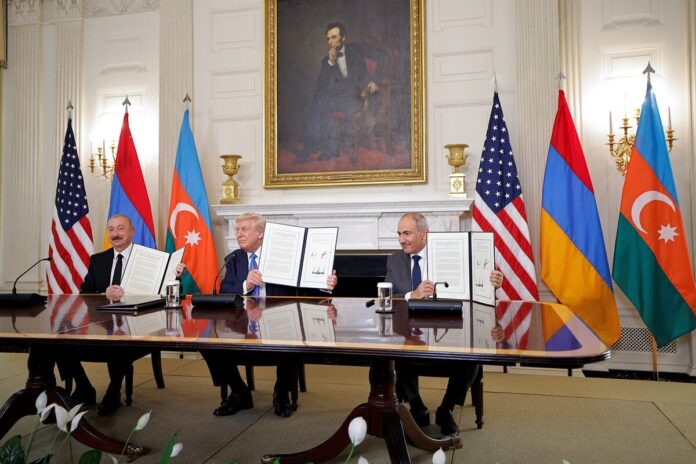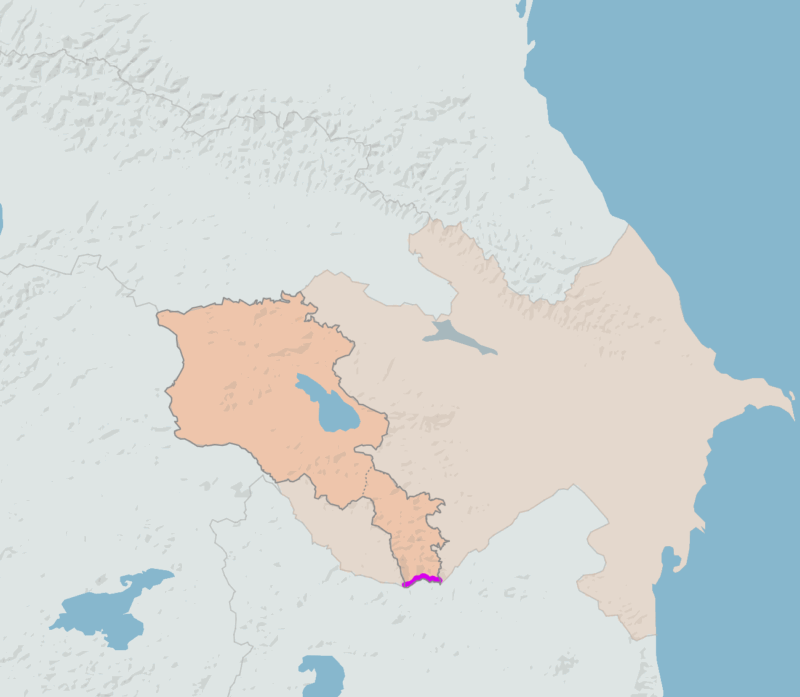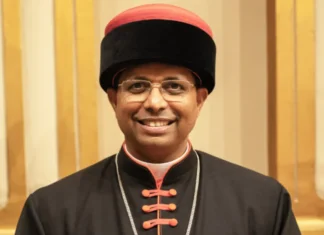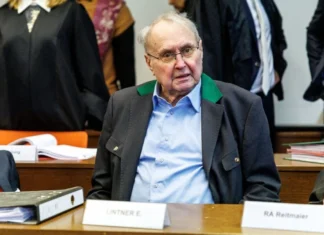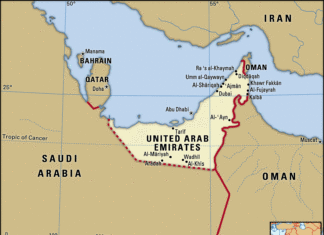WASHINGTON (RFE/RL) — The leaders of Armenia and Azerbaijan signed a US-brokered peace deal aimed at ending decades of conflict between the two countries at a ceremony hosted by US President Donald Trump at the White House.
Armenian Prime Minister Nikol Pashinyan and Azerbaijani President Ilham Aliyev, seated on either side of Trump, also on August 8 signed agreements with the United States to pursue economic opportunities together.
Trump praised them as “two very smart leaders” who will go down in history for reaching the agreements and for committing themselves to a permanent peace after decades of conflict.
“Armenia and Azerbaijan are committing to stop all fighting forever, open up commerce, travel and diplomatic relations and respect each other’s sovereignty and territorial integrity,” Trump said.
The US president also said he was lifting restrictions on military cooperation with Azerbaijan, an action that Aliyev said he was grateful for. The restrictions were imposed on Azerbaijan in 1992.
Unanswered Questions



